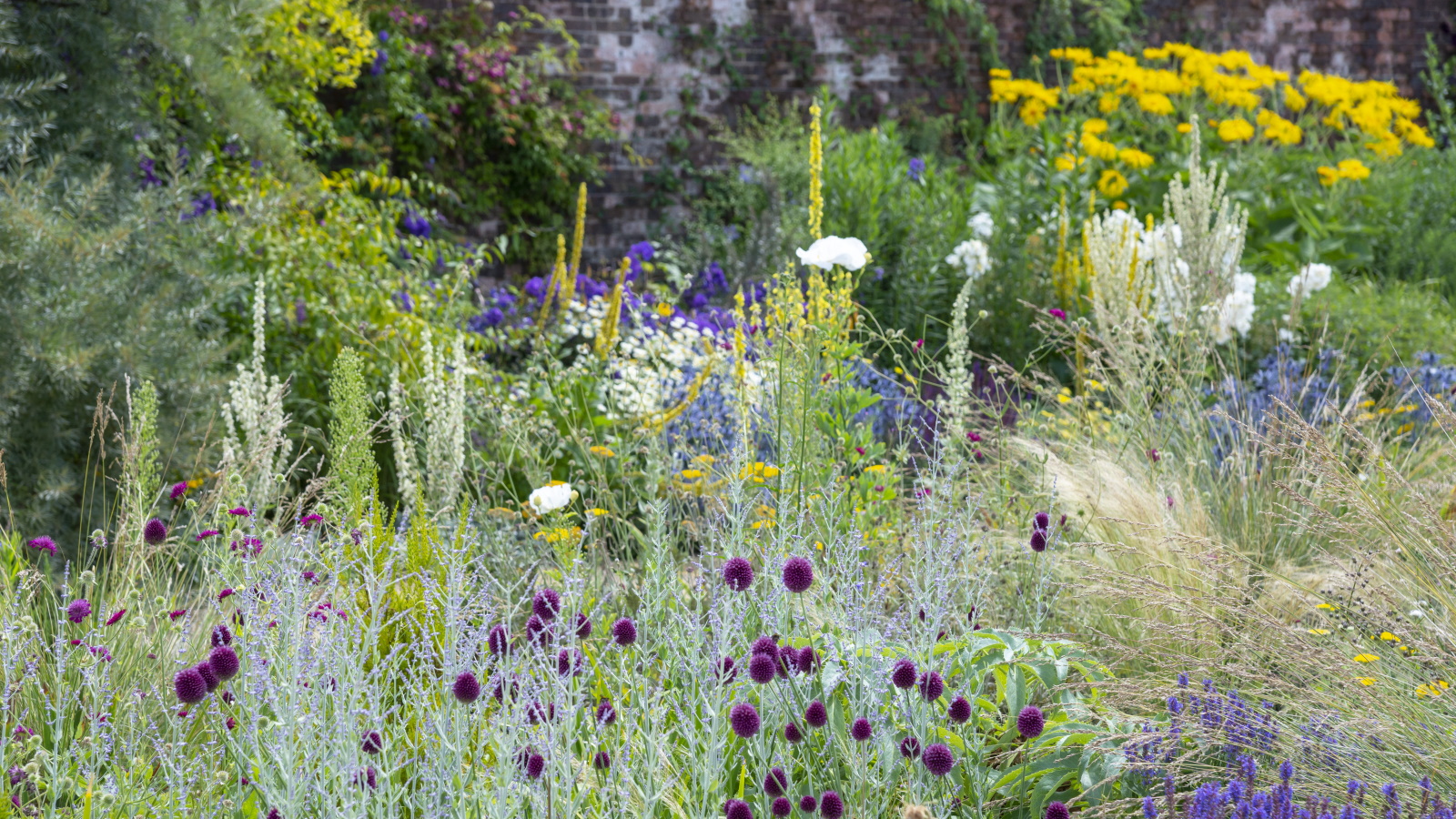
For any gardener interested in how to attract butterflies to their outside space this year, planting a butterfly border is certainly one way to draw pollinators in. With a small amount of design work, and by growing the best plants for a butterfly garden, you too can cultivate a butterfly-friendly space full of nectar-rich, scented and colorful flowers.
As gardeners, we have a responsibility to incorporate wildlife garden ideas into our outside spaces, however big or small they might be. In doing so, birds, butterflies, bees and other insects will fill our backyards, a welcome sight during the spring and summer months.
By providing a range of different habitats, nectar-rich plants for butterflies and host plants for larvae and caterpillars, gardeners can enhance the biodiversity in their outside spaces, which is both a joy to see and educative, particularly for those looking for backyard ideas for kids.
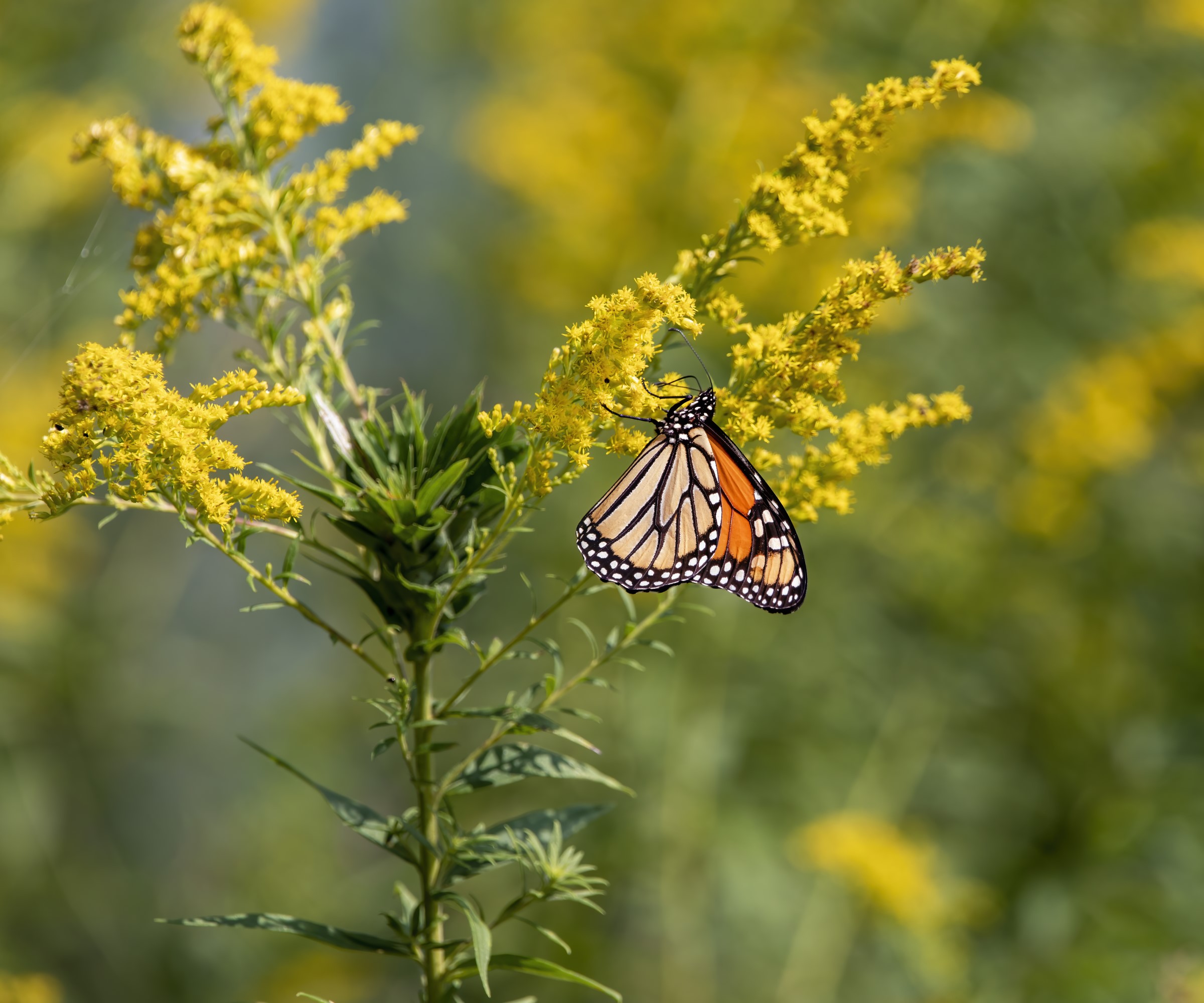
How to design and plant a butterfly border
By using a mixture of flowering annuals, perennials and native shrubs and trees, gardeners can easily cultivate a butterfly-friendly outside space full of fragrant and colorful blooms.
Why attract butterflies to a yard?
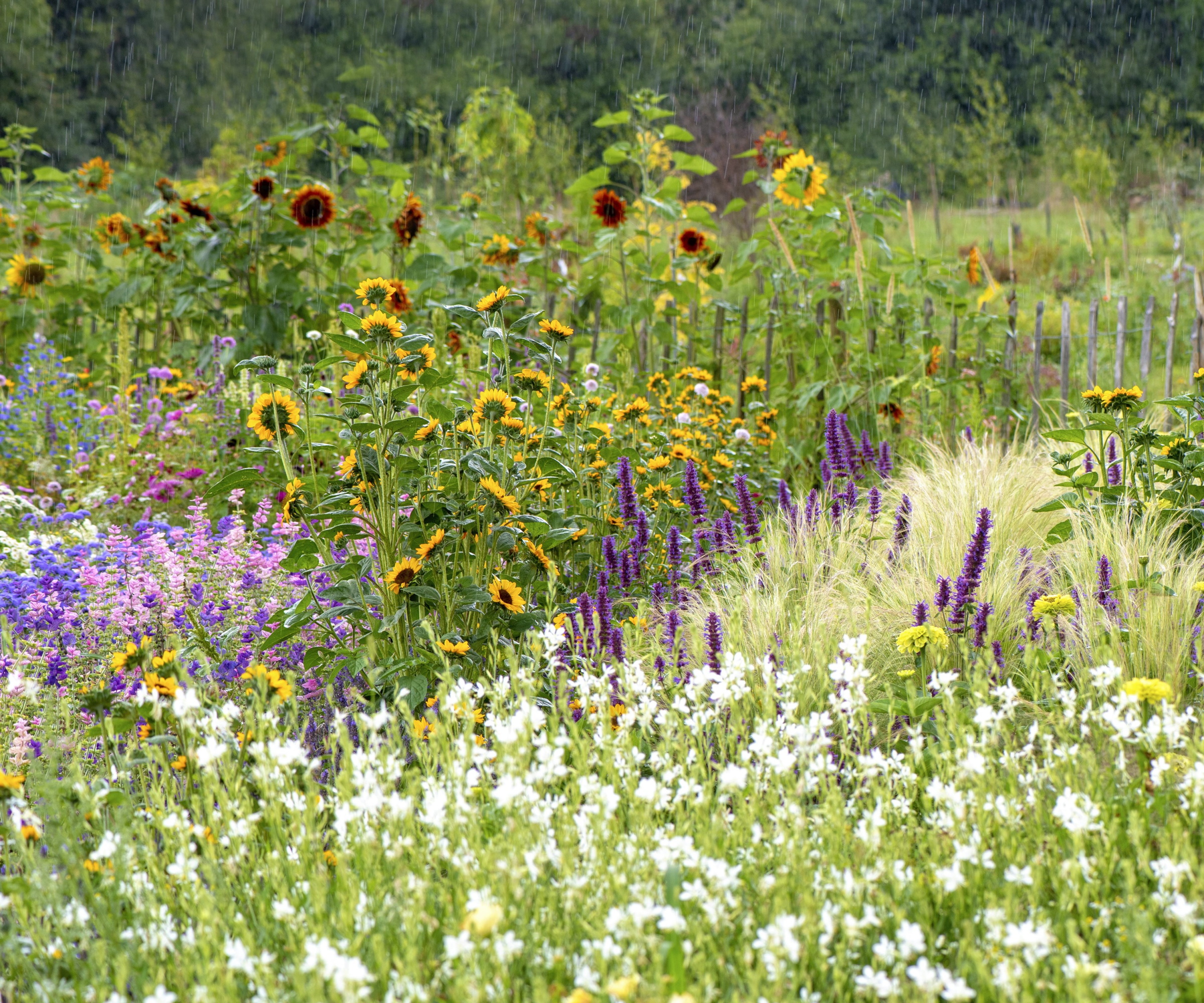
Butterflies are 'considered indicators of a healthy environment,' says Natalie Carmolli, garden expert and Public Relations Specialist at Spring Meadow Nursery. 'They have a relatively short lifespan,' Natalie continues, 'reacting quickly to climactic or habitat changes.'
Any decline in numbers, therefore, 'can signal environmental stress,' adds Natalie, and conversely, 'increasing numbers of butterflies in your backyard is a signaller of well-functioning ecosystems.' One way to bolster your backyard ecosystem and increase butterfly numbers is to plant with pollinators in mind.
If you have a garden border that requires some attention, or even a few empty containers, take on the role of garden designer this year, planning and planting your own butterfly border, which needn't be complicated or costly.
Designing your butterfly border
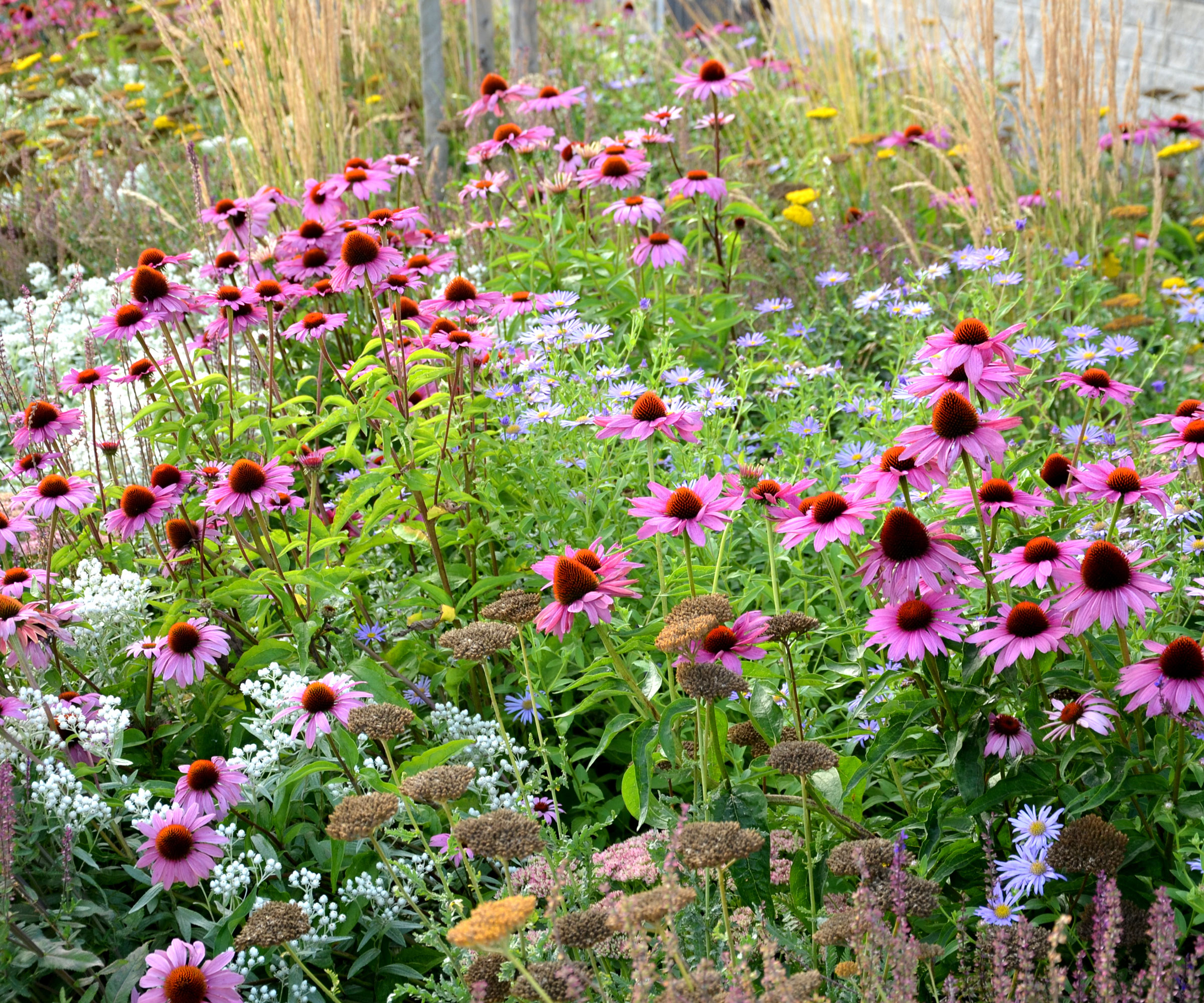
Firstly, identify a vacant spot in your outside space that is suitable for a butterfly border. Ideally, this will enjoy some sunshine for at least part of the day. Remember that butterflies are cold-blooded insects and are more active in beds and yards that receive at least six hours of sun each day. Therefore, planting a border in a warm and sunny position is recommended.
When considering flower bed ideas, using a border already planted with trees and shrubs will make this project less labor-intensive by utilizing what is already growing in the yard and adding to it.
Secondly, take the time to complete some research on which butterfly species you want to attract or that are popular in your locality. The North American Butterfly Association (NABA) has useful resources online to help gardeners identify regional species specific to their location and US hardiness zones. Doing a small amount of research at this stage will help you to understand the recommended plants for pollinators in your area.
'Planting a variety of native and non-native nectar-rich plants in your garden can create a welcoming habitat for butterflies,' says Natalie. Indeed, when designing your new border, using a variety of plants is recommended. It is best to include early and later flowering species, to prolong the growing season and ensure that butterflies have food right through spring and summer and into fall.
Nectar-producing plants will undoubtedly attract butterflies, but 'true butterfly gardening does mean supporting the entire lifecycle of the butterfly', she adds.
It is important to incorporate host plants with lush foliage, which support larvae and caterpillars as they feed. This does mean, however, that as gardeners, we must tolerate a small amount of munched leaves and some untidiness, which is all part of creating an outdoor space that benefits nature as well as ourselves.
Host plant options for your butterfly border
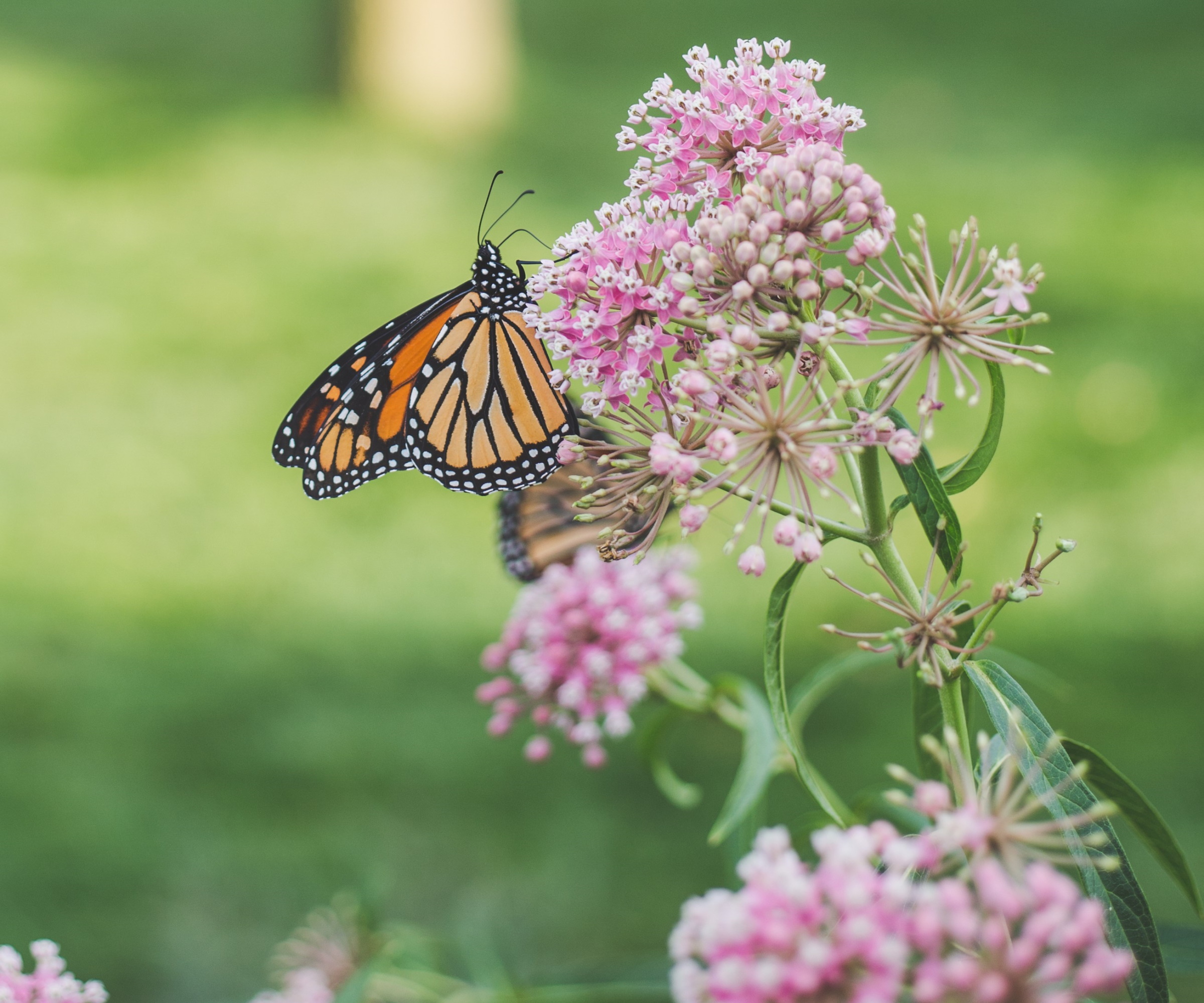
As mentioned, it is recommended to plant both nectar-rich flowers for adult butterflies and host plants for caterpillars. Planting a combination of trees, shrubs and perennials, while also incorporating native species, is advisable. For example, planting spring flowering shrubs alongside some of the best fragrant flowers and late summer flowers will help to support pollinators throughout the growing season right through until fall.
Firstly, it is important to understand the relationship between host plants and butterflies. 'Butterflies lay their eggs on specific host plants because those plants serve as food sources for emerging caterpillars,' says Natalie. 'One of the most well-known examples is the monarch butterfly using milkweed as a host plant.' For those considering how to grow milkweed, it is, fortunately, an easy-to-grow plant that needs very little looking after once grown.
Incorporating host plants, like milkweed, into your butterfly border will help to 'support the life cycle of butterflies, and help to ensure their survival,' continues Natalie.
In addition to milkweed, 'eastern black swallowtail butterflies, one of my favorites, love to eat some of the same plants that we love to eat, parsley, fennel and dill,' adds Natalie.
Certain butterfly species sometimes depend on just one plant species, so incorporating specific plants can be crucial to support local butterfly populations. Wild blue lupins, for example, are the 'only plant the endangered karner blue caterpillars can eat,' seen in the image below.
Finally, the caterpillars of several species of skipper butterflies feed on the foliage of some of the best native grasses. For example, the dusted skipper caterpillar feeds on prairie grasses like little bluestem, otherwise known as beard grass, and so incorporating grasses in your borders is a good idea.
Nectar and flowering plant options for your butterfly border
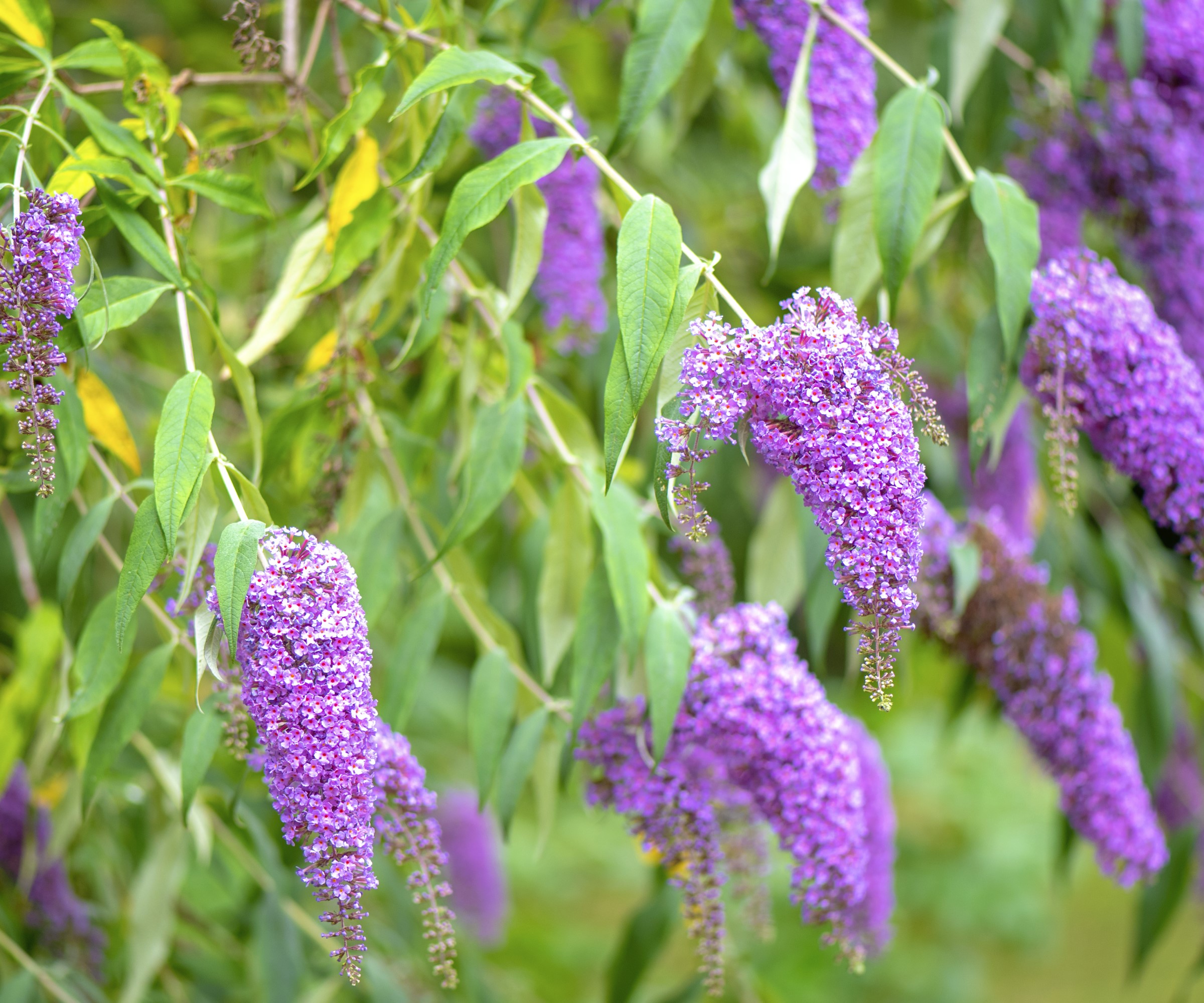
In addition to host plants, consider incorporating small to medium-sized trees in your backyard. Many of the best native dogwood trees, for example, produce attractive flowers early in the spring months, which will help to attract pollinators before the floriferous summer season.
No butterfly border would be complete without a range of high-nectar plants, which provide food for adult butterflies. Many flowers that appeal to butterflies tend to have clusters of small flowers, which allows butterflies to feast on many blooms in one small area, expending less energy than continuously searching for nectar.
Many of the best perennials, such as black-eyed Susan or rudbeckia, are a hit with butterflies. Swallowtail butterflies, for example, adore perennial phlox blooms, while monarch butterflies adore lantana flowers. Perennial selections will be determined by your region and hardiness zone, but it is a good idea to consider planting several different perennials of varying colors and scents.
The perennial shrub known commonly as butterfly bush is often considered the most popular food source for butterflies. The 'pink delight' variety, for example, is a 'beloved choice for gardeners looking to attract butterflies, bees, and hummingbirds to their gardens,' says Alex Kantor, plant expert and Owner at Perfect Plants Nursery.
'The sweet scent of the blooms, described as honey-like, acts as a pollinator magnet, drawing in pollinators to nourish on its nectar,' continues Alex. This 'pink delight' butterfly bush is available from Perfect Plants Nursery.
Additional support for butterflies
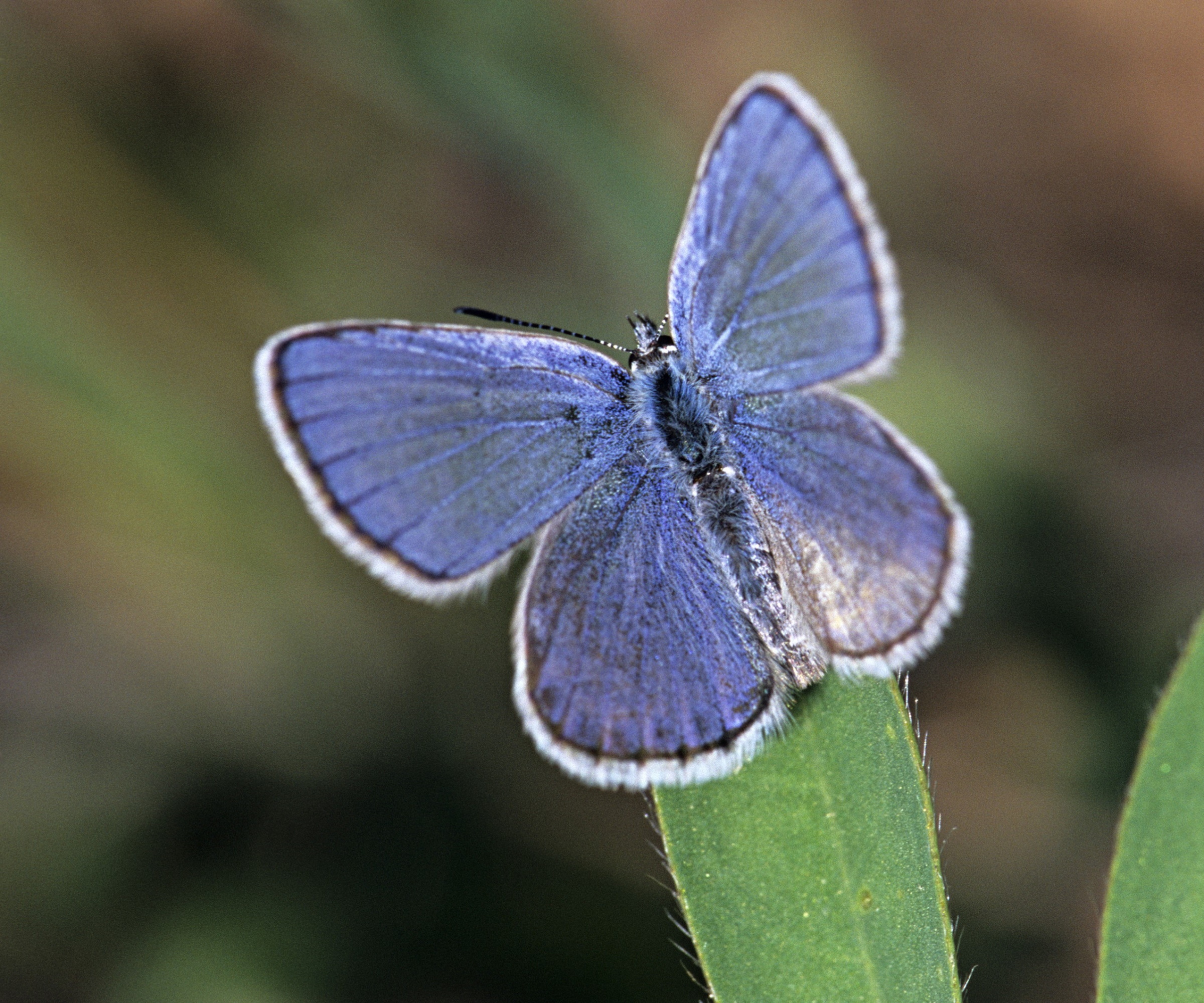
In addition to established trees and smaller shrubs that provide a windbreak and a place to shelter for pollinators, consider keeping a log pile in a secluded corner of your backyard, giving butterflies a spot to sleep at night and a place to hide from predators. Butterfly homes are also widely available and can help to protect pollinators from predators.
It is also a good idea to offer water for pollinators, particularly in dry periods during the summer months. Maintain and refill a bird bath or plant saucer regularly, with small rocks added so that butterflies can perch as they drink.
Finally, all gardeners interested in attracting butterflies to garden borders should consider permaculture gardening methods. If you are keen to increase the number of pollinators, put the fertilizers and pesticides away, and opt for companion planting and organic methods for pest control.
While butterflies like sunshine and flowers, in wet, rainy or windy weather, we need to provide them with shelter. This house is easy for butterflies to enter through the front three slotted openings.
FAQs
When are butterflies most active during the day?
Summer is peak butterfly season. Butterflies are easiest to spot on still, warm, sunny days. Butterflies are most active around the middle of the day, but you will be able to spot them during the morning and early evening, particularly during the summer months. Butterfly activity will quickly decline in early fall as the temperatures begin to drop.
Planting a butterfly border in your backyard will help to attract masses of pollinators during spring and summer, with flowering perennials and shrubs often seen humming with crowds of insects and butterflies perching and feeding.
If you are looking for further wildlife projects for your outside space this year, have you ever considered how to make a bug hotel? By reusing old materials, you can help to provide a valuable habitat for pollinators and other insects.







